-
 Bitcoin
Bitcoin $79,012.1761
-4.78% -
 Ethereum
Ethereum $1,570.4026
-12.09% -
 Tether USDt
Tether USDt $0.9994
-0.02% -
 XRP
XRP $1.9666
-7.46% -
 BNB
BNB $555.4328
-6.02% -
 USDC
USDC $0.9999
-0.01% -
 Solana
Solana $107.5201
-9.67% -
 Dogecoin
Dogecoin $0.1506
-10.27% -
 TRON
TRON $0.2315
-2.62% -
 Cardano
Cardano $0.5814
-10.27% -
 UNUS SED LEO
UNUS SED LEO $8.8602
-2.17% -
 Chainlink
Chainlink $11.3795
-10.04% -
 Toncoin
Toncoin $3.0063
-7.92% -
 Stellar
Stellar $0.2370
-5.38% -
 Avalanche
Avalanche $16.1395
-9.48% -
 Shiba Inu
Shiba Inu $0.0...01134
-7.55% -
 Sui
Sui $1.9135
-13.06% -
 Hedera
Hedera $0.1425
-11.59% -
 Polkadot
Polkadot $3.7145
-5.76% -
 MANTRA
MANTRA $5.9824
-4.31% -
 Bitcoin Cash
Bitcoin Cash $272.1059
-9.40% -
 Litecoin
Litecoin $71.2279
-13.11% -
 Dai
Dai $1.0000
-0.02% -
 Ethena USDe
Ethena USDe $0.9987
-0.05% -
 Bitget Token
Bitget Token $4.1866
-5.67% -
 Pi
Pi $0.5915
4.23% -
 Monero
Monero $200.3568
-5.71% -
 Hyperliquid
Hyperliquid $10.5427
-10.74% -
 Uniswap
Uniswap $5.1188
-11.73% -
 OKB
OKB $50.3711
-2.37%
How do NFT Index Funds allow investors to diversify risks?
NFT index funds mitigate risk by diversifying investments across multiple NFTs, reducing the impact of individual NFT price volatility. Different funds focus on various categories (art, gaming, etc.), allowing tailored risk exposure. However, liquidity remains a challenge.
Mar 04, 2025 at 02:25 am
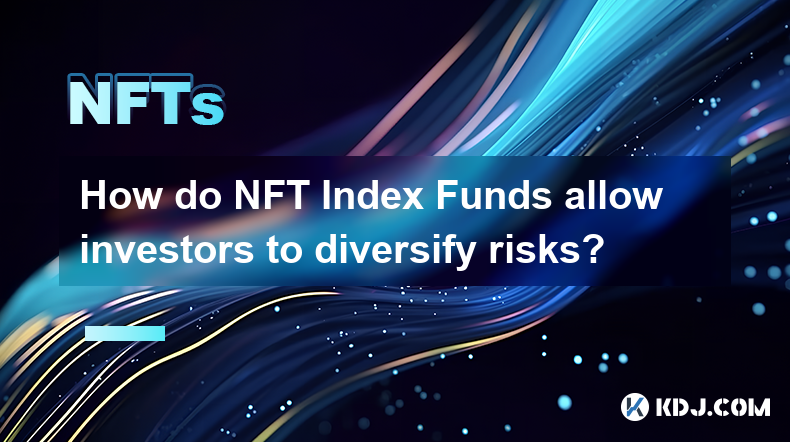
Key Points:
- NFT Index Funds offer diversification by investing across a range of NFTs, mitigating the risk associated with individual NFT price volatility.
- Diversification within an NFT index fund reduces the impact of a single NFT underperforming or becoming obsolete.
- Different index funds focus on various NFT categories (art, gaming, metaverse assets, etc.), allowing investors to tailor their risk exposure.
- The fund's management team plays a crucial role in selecting and managing the underlying NFTs, impacting risk and return.
- Liquidity in the NFT market remains a challenge, impacting the ease of buying and selling shares in NFT index funds.
How do NFT Index Funds Allow Investors to Diversify Risks?
The volatile nature of the NFT market presents significant risk for individual investors. A single NFT purchase can expose an investor to substantial losses if the NFT's value plummets. NFT index funds offer a solution by diversifying investments across multiple NFTs, similar to traditional stock market index funds. This diversification strategy helps mitigate the risk of significant losses from any single NFT underperforming. Instead of placing all your eggs in one basket, you spread your investment across a basket of NFTs.
Unlike investing in individual NFTs, where a single poor choice can significantly impact your portfolio, an NFT index fund distributes risk across a portfolio of assets. If one NFT decreases in value, the impact on your overall investment is lessened by the gains or stability of other NFTs within the fund. This reduces the volatility and potential for substantial losses inherent in single NFT investments.
The composition of an NFT index fund significantly impacts its risk profile. Funds specializing in established blue-chip NFTs generally carry lower risk than those focused on newer, less-proven projects. Consider the fund's methodology. Some funds might prioritize rarity, while others may focus on community engagement or projected future utility. Understanding these approaches helps investors assess the risk involved.
Another key aspect of diversification within NFT index funds lies in the categorization of the underlying assets. Some funds may concentrate on digital art, while others focus on utility NFTs within specific gaming ecosystems or metaverse platforms. By investing in different categories, you further reduce your overall risk. A downturn in one sector might be offset by growth in another. This sector-specific diversification is a crucial aspect of managing risk in the rapidly evolving NFT landscape.
Understanding the Role of Fund Management in Risk Management
The expertise of the fund management team is a critical factor influencing the risk profile of an NFT index fund. The selection and management of the underlying NFTs heavily impact the fund's performance and overall risk. A skilled team can identify promising projects and navigate market fluctuations effectively, minimizing potential losses.
Conversely, an inexperienced or poorly performing management team could lead to significant losses. Investors should thoroughly research the fund's management team, examining their track record and understanding their investment strategy. Transparency in the fund's investment decisions and portfolio composition is crucial for assessing the level of risk. The team's ability to react to market changes and adapt the portfolio accordingly is a vital aspect of successful risk management.
The frequency of rebalancing the portfolio also plays a crucial role. Regular rebalancing can help mitigate risk by adjusting the allocation of assets based on market performance. A well-defined rebalancing strategy is a key component of a robust risk management framework within an NFT index fund.
Liquidity and its Impact on Risk
Liquidity, or the ease with which an asset can be bought or sold, is a crucial factor affecting the risk associated with NFT index funds. Unlike traditional index funds that trade on established exchanges, the NFT market can experience periods of low liquidity, making it challenging to quickly buy or sell shares in some NFT index funds.
Low liquidity increases the risk of substantial price fluctuations and difficulties in exiting the investment if needed. Investors should carefully assess the liquidity of the specific NFT index fund they are considering. Understanding the fund's trading mechanisms and the volume of trades helps gauge the ease with which shares can be bought and sold. The fund's structure and the underlying NFT market's liquidity significantly impact the overall risk profile.
Diversification Strategies Within NFT Index Funds
Investors can further diversify their risk by investing in multiple NFT index funds with different strategies and underlying asset compositions. This strategy reduces reliance on a single fund's performance and spreads risk across various investment approaches. Consider funds focused on different NFT categories, such as gaming, art, or metaverse assets. This multi-fund approach enhances diversification and mitigates risk.
Furthermore, consider diversifying beyond just NFT index funds by incorporating other crypto assets into your overall portfolio. This broad diversification reduces your exposure to the NFT market's volatility. A balanced portfolio combining NFTs, other cryptocurrencies, and potentially traditional assets can offer a more robust risk management strategy.
Common Questions:
Q: Are NFT index funds suitable for all investors?
A: No. NFT index funds carry inherent risks due to the volatility of the NFT market and potential liquidity issues. They are best suited for investors with a high-risk tolerance and a good understanding of the cryptocurrency and NFT markets.
Q: How do I choose an NFT index fund?
A: Carefully research different funds, considering their management team, investment strategy, underlying assets, and liquidity. Look for transparency in their operations and a well-defined risk management framework.
Q: What are the potential downsides of NFT index funds?
A: Potential downsides include liquidity challenges, exposure to the volatile NFT market, and dependence on the fund management team's expertise. There's also the risk of the fund underperforming compared to the overall market.
Q: How do NFT index funds compare to investing in individual NFTs?
A: NFT index funds offer diversification, reducing the risk associated with investing in a single NFT. However, individual NFT investments offer the potential for higher returns (and higher losses) compared to a diversified fund.
Q: What are the fees associated with NFT index funds?
A: Fees vary depending on the fund, but typically include management fees and potentially transaction fees. It's crucial to understand the fee structure before investing.
Disclaimer:info@kdj.com
The information provided is not trading advice. kdj.com does not assume any responsibility for any investments made based on the information provided in this article. Cryptocurrencies are highly volatile and it is highly recommended that you invest with caution after thorough research!
If you believe that the content used on this website infringes your copyright, please contact us immediately (info@kdj.com) and we will delete it promptly.
- Pepe (PEPE) Weekly Performance Hints At Huge Surge
- 2025-04-07 04:15:13
- XRP Price Tanks 12.8% This Week — More Pain to Come?
- 2025-04-07 04:15:13
- XRP's Funding Rate Has Dropped to Negative 0.012%, a Level Last Seen When the Asset Traded Near $0.33
- 2025-04-07 04:10:13
- A major supply event is coming for the SUI token
- 2025-04-07 04:10:13
- Memecoin DEX PumpSwap Makes a Significant Impact, Attracting 700K Wallets and Facilitating 30M Swaps
- 2025-04-07 04:05:12
- Ronin Network (RON) Has Retraced Heavily This Year
- 2025-04-07 04:05:12
Related knowledge
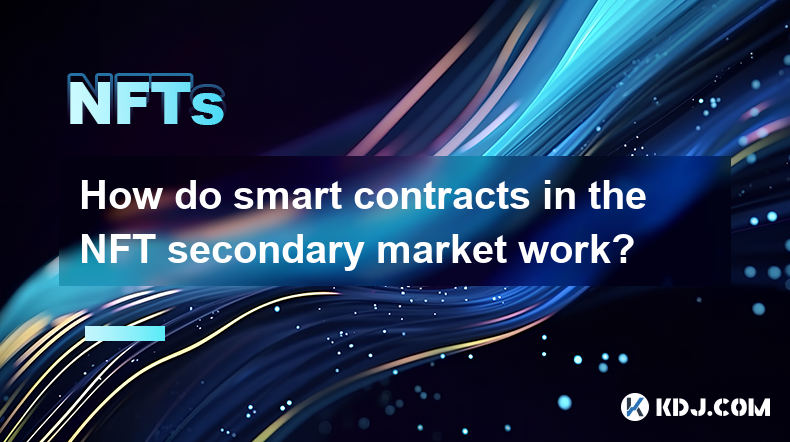
How do smart contracts in the NFT secondary market work?
Apr 03,2025 at 07:14am
Smart contracts play a pivotal role in the NFT secondary market, facilitating seamless transactions and enforcing predefined rules. These self-executing contracts with the terms of the agreement directly written into code are stored on the blockchain. In the context of NFTs, smart contracts automate the buying, selling, and transferring of digital asset...
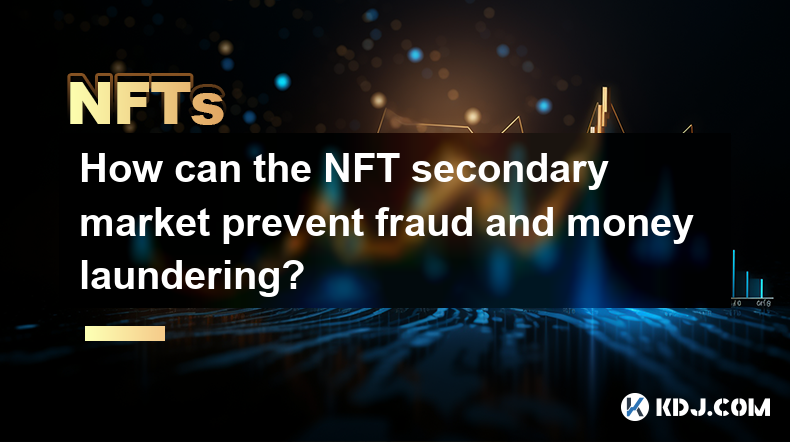
How can the NFT secondary market prevent fraud and money laundering?
Apr 03,2025 at 08:35am
The NFT secondary market has become a thriving hub for digital art and collectibles, but it also faces challenges in preventing fraud and money laundering. To tackle these issues, the market can implement various strategies and technologies to ensure a safer and more transparent trading environment. This article will explore how the NFT secondary market...

How are transaction fees in the NFT secondary market calculated?
Apr 04,2025 at 05:28am
The calculation of transaction fees in the NFT secondary market is a crucial aspect that both buyers and sellers need to understand. These fees can significantly impact the overall cost of transactions and the profits that sellers can make. In this article, we will delve into the various components that make up these fees, how they are calculated, and w...
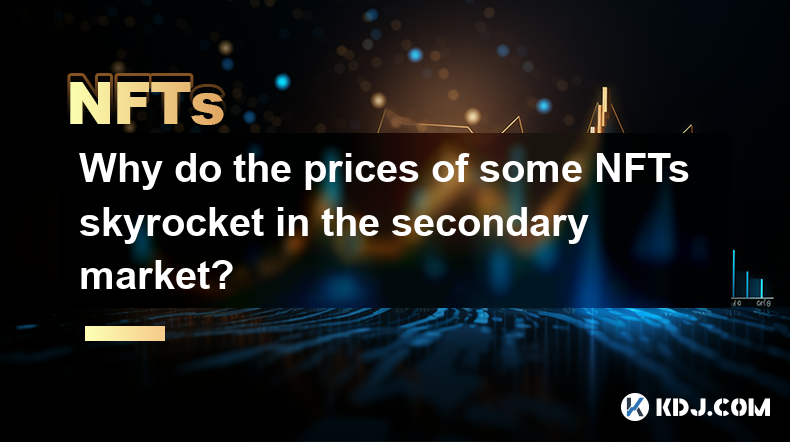
Why do the prices of some NFTs skyrocket in the secondary market?
Apr 06,2025 at 07:08am
The phenomenon of NFT prices skyrocketing in the secondary market is a fascinating aspect of the cryptocurrency and digital art world. Non-Fungible Tokens (NFTs) have taken the digital world by storm, and their value can surge dramatically after initial sales. Several factors contribute to this price surge, including rarity, demand, speculation, and the...
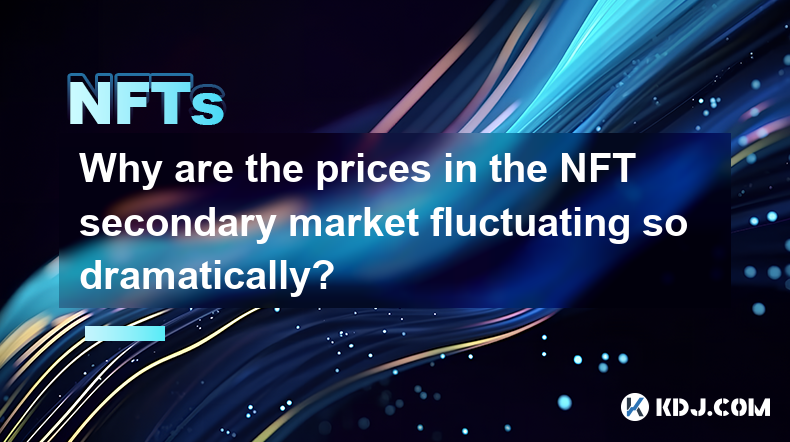
Why are the prices in the NFT secondary market fluctuating so dramatically?
Apr 03,2025 at 10:35pm
The NFT secondary market has been experiencing dramatic price fluctuations, leaving many in the cryptocurrency community puzzled and curious. To understand this phenomenon, it's essential to delve into the factors driving these price movements. From the impact of market sentiment and celebrity endorsements to the role of speculation and the unique natur...
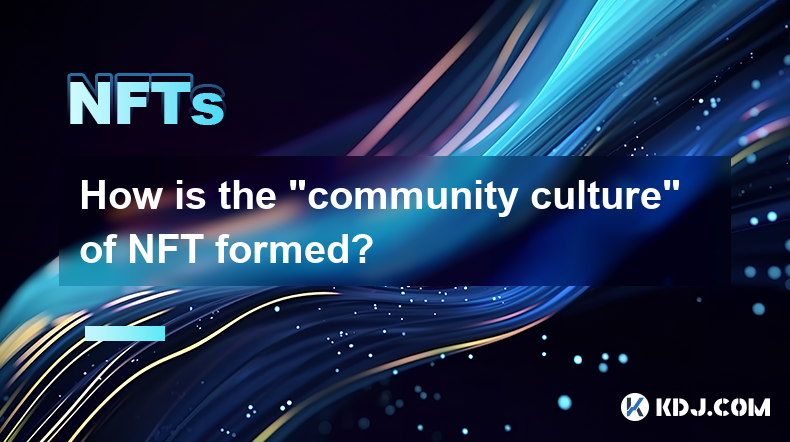
How is the “community culture” of NFT formed?
Apr 03,2025 at 11:07am
The formation of the 'community culture' within the NFT (Non-Fungible Token) space is a fascinating and multi-faceted process. It involves various elements such as shared interests, active engagement, and the creation of a sense of belonging among members. NFT communities often revolve around specific projects or artists, fostering a unique environment ...

How do smart contracts in the NFT secondary market work?
Apr 03,2025 at 07:14am
Smart contracts play a pivotal role in the NFT secondary market, facilitating seamless transactions and enforcing predefined rules. These self-executing contracts with the terms of the agreement directly written into code are stored on the blockchain. In the context of NFTs, smart contracts automate the buying, selling, and transferring of digital asset...

How can the NFT secondary market prevent fraud and money laundering?
Apr 03,2025 at 08:35am
The NFT secondary market has become a thriving hub for digital art and collectibles, but it also faces challenges in preventing fraud and money laundering. To tackle these issues, the market can implement various strategies and technologies to ensure a safer and more transparent trading environment. This article will explore how the NFT secondary market...

How are transaction fees in the NFT secondary market calculated?
Apr 04,2025 at 05:28am
The calculation of transaction fees in the NFT secondary market is a crucial aspect that both buyers and sellers need to understand. These fees can significantly impact the overall cost of transactions and the profits that sellers can make. In this article, we will delve into the various components that make up these fees, how they are calculated, and w...

Why do the prices of some NFTs skyrocket in the secondary market?
Apr 06,2025 at 07:08am
The phenomenon of NFT prices skyrocketing in the secondary market is a fascinating aspect of the cryptocurrency and digital art world. Non-Fungible Tokens (NFTs) have taken the digital world by storm, and their value can surge dramatically after initial sales. Several factors contribute to this price surge, including rarity, demand, speculation, and the...

Why are the prices in the NFT secondary market fluctuating so dramatically?
Apr 03,2025 at 10:35pm
The NFT secondary market has been experiencing dramatic price fluctuations, leaving many in the cryptocurrency community puzzled and curious. To understand this phenomenon, it's essential to delve into the factors driving these price movements. From the impact of market sentiment and celebrity endorsements to the role of speculation and the unique natur...

How is the “community culture” of NFT formed?
Apr 03,2025 at 11:07am
The formation of the 'community culture' within the NFT (Non-Fungible Token) space is a fascinating and multi-faceted process. It involves various elements such as shared interests, active engagement, and the creation of a sense of belonging among members. NFT communities often revolve around specific projects or artists, fostering a unique environment ...
See all articles





















































































